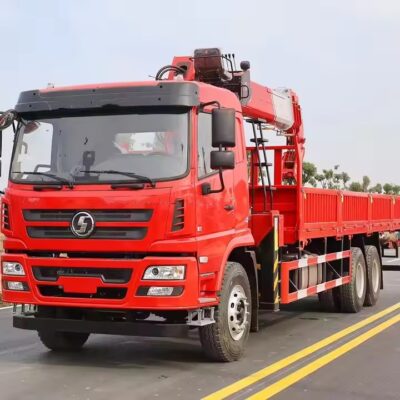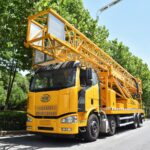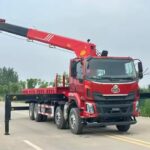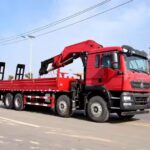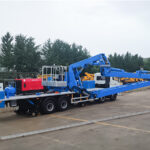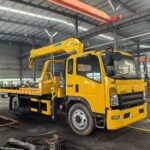トラック搭載クレーンs are a type of multi-action crane that can be installed on the chassis of a vehicle and are capable of lifting and horizontally moving heavy objects within a specific range. They are also referred to as truck-mounted hoists and fall under the category of material handling machinery. Foreign トラック搭載クレーンs are mainly manufactured by over ten companies from nations such as Sweden, Italy, Austria, Germany, the United States, Japan, Canada, and others.
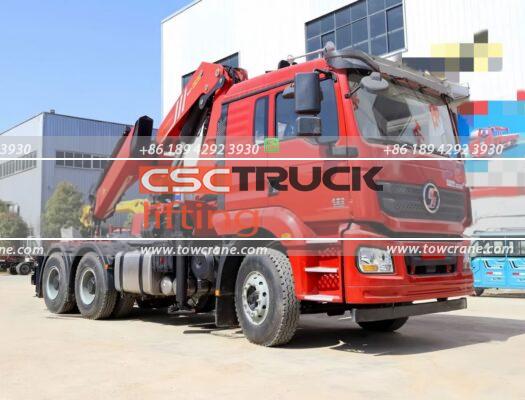
トラック搭載クレーンs achieve a variety of mechanical movements through the principle of hydraulic transmission. Commonly, the power of the vehicle is utilized to drive the hydraulic oil pump via the power take-off device and is connected to the hydraulic valve to operate. In cases where there is no vehicle power available, the power source is obtained through the oil pump motor unit. The oil pump motor unit functions by driving the motor with a 380V voltage in scenarios such as in the wilderness, at the dock, on ships, in workshops, and other locations where vehicle power is absent. For fieldwork, a generator is often required to generate electricity, after which the motor drives the oil pump to commence operation.
The composition of a トラック搭載クレーン encompasses several key components, including the boom, column, frame, outriggers, and hydraulic elements. The boom serves as the primary device for lifting goods during the lifting process. The column is a vital component that connects the boom and the frame, and it plays a crucial role when the goods need to rotate left and right. The frame mainly functions as a component for connecting and securing the column and the outriggers. The main purpose of the outriggers is to maintain the equilibrium of the crane during its operation. The hydraulic system consists of components such as the fuel tank, oil pump, cylinder, multi-way reversing valve, hydraulic lock, balance valve, motor, slewing center joint, pipelines, and more. さらに, there are also winch mechanisms and slewing mechanisms.
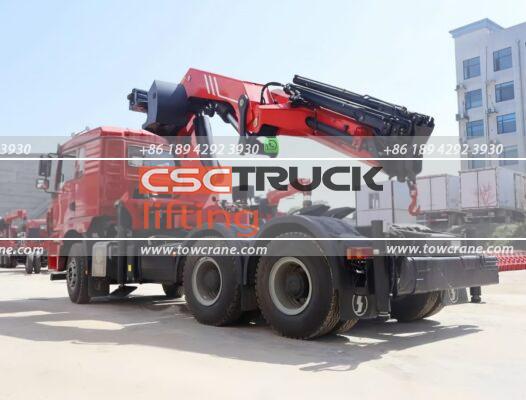
When it comes to the slewing forms of トラック搭載クレーンs, in the Chinese market, the main slewing structures of トラック搭載クレーンs currently include rack slewing and slewing bearing. Rack slewing involves the movement where the rack is driven by the cylinder of the crane to rotate the column. Since the rack is in a straight-line configuration, it is unable to continue moving forward once it has rotated to a certain position. Consequently, rack slewing has a defined range of motion.
The boom of the トラック搭載クレーン is engineered to handle the weight and stress of the lifted objects. It is constructed with high-strength materials to ensure stability and durability during lifting operations. The design and length of the boom determine the maximum lifting height and reach of the crane.
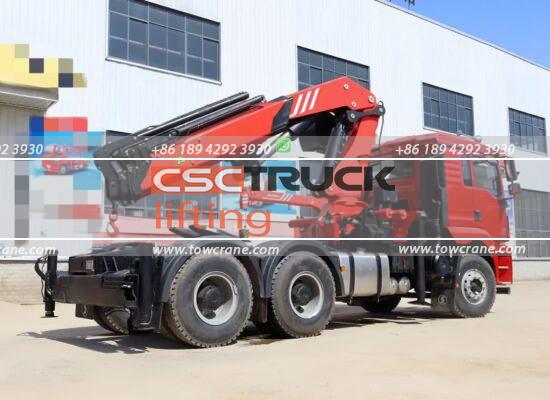
The column not only provides the connection between the boom and the frame but also contributes to the stability and control of the rotation movement. Its structural integrity and mechanical properties are critical for smooth and precise rotational adjustments.
The frame serves as the backbone of the crane, providing a stable platform for the attachment of other components and absorbing the forces and stresses generated during operation.
The outriggers are an essential safety feature that ensures the stability of the crane, especially when handling heavy loads. They can be extended or retracted as needed to provide a wider base of support and prevent tipping or instability.
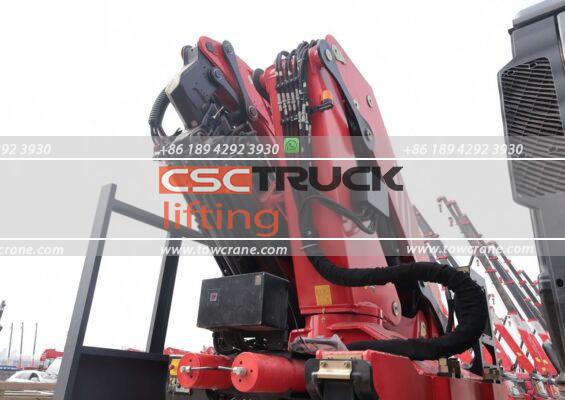
The hydraulic system is the heart of the トラック搭載クレーン‘s operation. The fuel tank stores the hydraulic fluid, which is pumped by the oil pump to generate the necessary pressure and flow. The cylinders and various valves control the movement and positioning of the boom, rotation of the column, and other functions. The balance valve ensures smooth and controlled movements, while the hydraulic lock prevents unintended movement or leakage.
The winch mechanism is responsible for the raising and lowering of the lifting cable or rope, while the slewing mechanism enables the rotational movement of the crane’s upper structure.
結論は, the working principle and components of トラック搭載クレーンs are complex yet highly coordinated systems. The efficient operation and performance of these cranes rely on the precise interaction and functionality of each component. Understanding these principles and components is crucial for the safe and effective use of トラック搭載クレーンs in various material handling and lifting applications.


